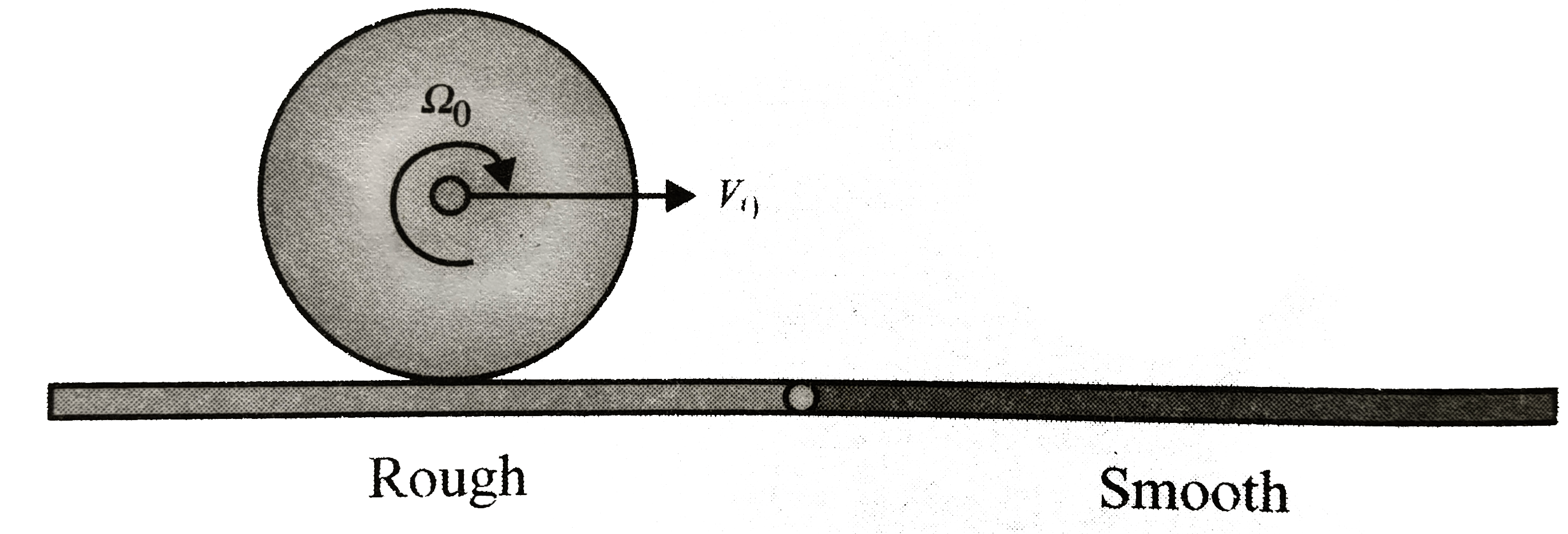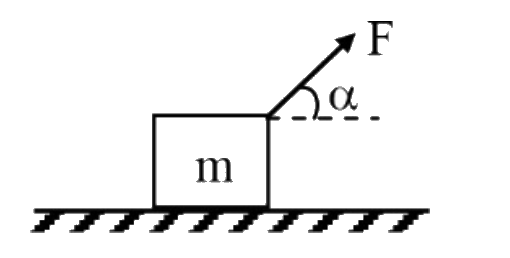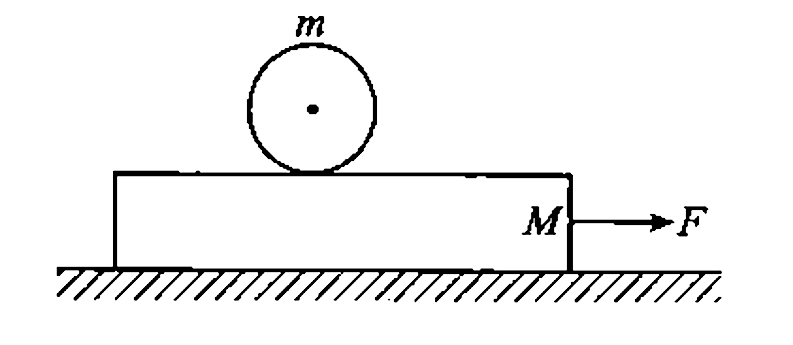A force of magnitude F is acting on rolling body of mass m and radius R as show in figure. What happens when it enters on a smooth surface?

When the body is rolling on the rough surface, the friction force acting on the surface acts in the backward direction. The force F increases acceleration of centre of mass while friction force provides torque for providing angular acceleration. The velocity of centre of mass is always such that vc=ωR, i.e, rolling is present. when the body enters on the smooth surface, the pulling force F is still acting i.e., F≠0

When the rolling body enters on a smooth surface, the force of friction disappears, i.e, f=0. As a result angular acceleration of the body about its centre of mass becomes zero.
What ever is the angular speed attained by the body, it continues to rotate with that. On the conntrary, the linear acceleration of the centre of mass suddenly increases to Fm
As a result its linear speed starts increasing and the condition vc=ωR does not hold true and the body will not roll on the smooth surface. The point of contact slips forward (v>ω0R).
Topper's Solved these Questions
- BOOK - CENGAGE PHYSICSCHAPTER - RIGID BODY DYNAMICS 2EXERCISE - Solved Examples12videos
RIGID BODY DYNAMICS 2
- BOOK - CENGAGE PHYSICSCHAPTER - RIGID BODY DYNAMICS 2EXERCISE - Exercise 3.111videos
RIGID BODY DYNAMICS 2
- BOOK - CENGAGE PHYSICSCHAPTER - RIGID BODY DYNAMICS 1EXERCISE - Integer11videos
RIGID BODY DYNAMICS 1
- BOOK - CENGAGE PHYSICSCHAPTER - SOUND WAVES AND DOPPLER EFFECTEXERCISE - Integer16videos
SOUND WAVES AND DOPPLER EFFECT
Similar Questions
A rolling body of mass m and radius R is rolling on a rough surface without any pulling force as shown in figure. What happens when it enters on a smooth surface?
 View Solution
View SolutionAt the instant t=0, a force F=kt (k is a constant) acts on a small body of mass m resting on a smooth horizontal surface. The time, when the body leaves the surface is
 View Solution
View Solution
Knowledge Check
- Question 1 - Select One
The total energy of rolling of mass 'm' and radius 'R' is
A3/2mv2B1/2mv2Cmv2D5/2mv2 - Question 2 - Select One
When a force F acts on a particle of mass m, the acceleration of particle becomes a. now if two forces of magnitude 3F and 4F acts on the particle simultaneously as shown in figure, then the acceleration of the particle is
 AaB2aC5aD8a
AaB2aC5aD8a - Question 3 - Select One
A horizontal force F of variable magnitude and constant direction acts on a body of mass m which is initially at rest at a point O on a smooth horizontal surface. The magnitude of F is given by F=β+αt where t is the time for which the force has been acting on the distance of the body from O at time t , then s is equal to.
A12m(βt+αt2)tB12m(β+αt2)C(β+αt)t22mDt26m(3β+αt)
Two forces of equal magnitude F act on two isolated bodies P and Q as shown in the figure. The mass of body Q is three times that of body P. The magnitude of the acceleration of P is
 View Solution
View SolutionA plank of mass M is placed on a smooth surface over which a cylinder of mass m and radius R is placed as shown in figure-5.63. Now the plank is pulled towards right with an external force F. If cylinder does not slip over the surface of plank find the linear acceleration of plank and cylinder and the angular acceleration of the cylinder.
 View Solution
View SolutionA force F acts at the centre of a thin spherical shell of mass m and radius R.
Find the acceleration of the shell if the surface is smooth.View SolutionWhen a rolling body enters onto a smooth horizontal surface, it will
View SolutionA force F is applied at the top of a ring of mass M and radius R placed on a rough horizontal surface as shown in figure. Friction is sufficient to prevent slipping. The friction force acting on the ring is:
 View Solution
View Solution

